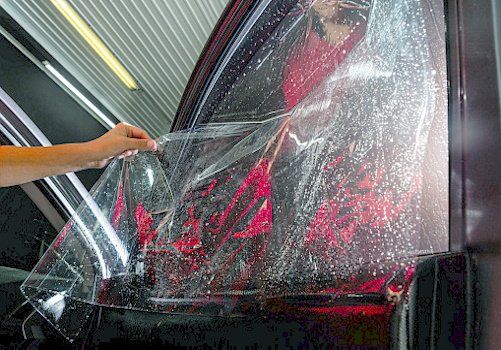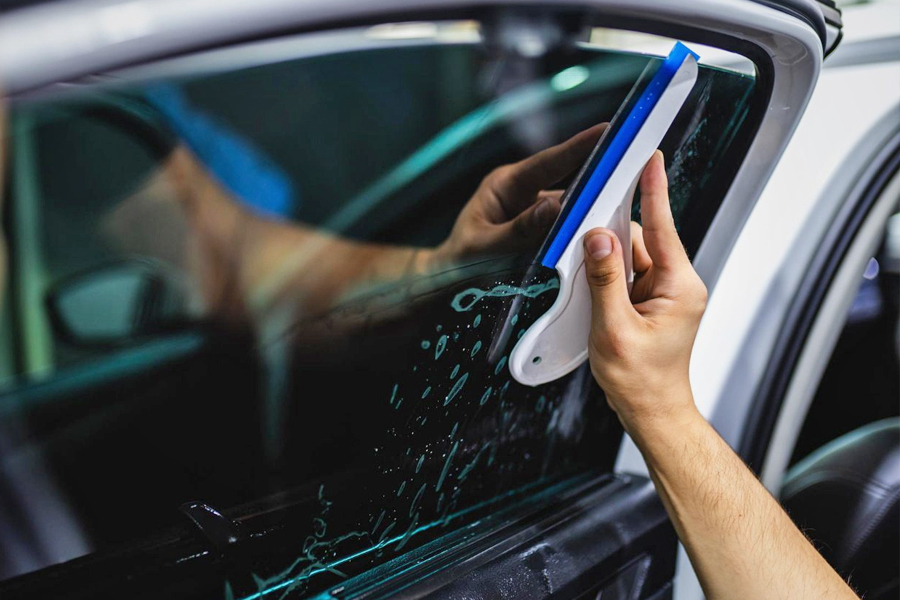Leading Reasons to Buy window tinting for Your Company Room
Exploring the Different Kinds of Home Window Color for Cars and Their Benefits

Colored Home Window Color
Dyed home window color is a popular choice among automobile owners looking for to boost personal privacy and lower glow while keeping a stylish look. This kind of tint is produced by incorporating dye right into the glue layer, which is after that put on the windows of the automobile. The main charm of dyed window tint exists in its capacity to offer a cosmetically pleasing look without giving up performance.
One of the most considerable advantages of dyed window tint is its capability to obstruct harmful UV rays, helping to safeguard both passengers and the car's interior from sun damage. In addition, this tint effectively decreases glare, adding to a much more comfortable driving experience, specifically throughout bright daytime conditions. The growing of home window shade likewise adds a layer of privacy, making it more challenging for outsiders to see inside the lorry.
Nevertheless, it is essential to note that while dyed home window tint offers countless advantages, it may not offer as much warm rejection as various other kinds of tints. Its long life can be affected by direct exposure to long term sunlight, potentially leading to fading over time. On the whole, colored window color continues to be a favored alternative for those prioritizing looks and fundamental sunlight protection.
Metalized Home Window Tint
Metalized home window tint stands for an advanced alternative for auto proprietors looking to enhance both performance and aesthetic appeals. One of the key benefits of metalized home window tint is its remarkable warmth being rejected capabilities, which can significantly lower the interior temperature level of an auto.
In addition, metalized tints supply raised longevity compared to colored films, making them immune to fading and scratching. This durability ensures that the color preserves its effectiveness and appearance over time, offering long-lasting value.
In addition, metalized window tint can improve privacy and security by making it extra tough for outsiders to see inside the automobile. The reflective quality of the color can also deter possible burglary, as belongings are less noticeable (window tinting). While it might interfere with some digital signals, such as GPS or mobile phone function, the total advantages make metalized window tint an engaging choice for several vehicle owners
Ceramic Home Window Color
Using advanced technology and unequaled performance, ceramic window tint has actually emerged as a top option for critical cars and truck proprietors. This cutting-edge movie is composed of advanced ceramic fragments that give substantial warmth denial while keeping clearness and exposure. Unlike conventional colors, ceramic window tint does not depend on metal or color, which can interfere with digital signals from devices such as general practitioner and cell phones.
One of the standout advantages of ceramic window color is its outstanding UV protection. It obstructs approximately 99% of hazardous ultraviolet rays, thereby shielding both the vehicle's inside and its owners from sun important source damage. In addition, this kind of tint boosts privacy without jeopardizing visibility, making it a useful alternative for daily motorists and luxury lorries alike.
Ceramic window color likewise flaunts resilience; it is immune to fading and scraping, making certain resilient efficiency. Its non-reflective nature indicates it does not cause glare, contributing to safer driving conditions (window tinting). For those seeking a premium tint service that combines appearances with performance, ceramic window tint sticks out as an exceptional choice, supplying improved convenience and security when traveling
Carbon Window Tint
When it concerns home window tinting alternatives, carbon window color has try this web-site actually obtained appeal for its mix of performance and price. This type of tint is composed of carbon bits, which offer a distinct matte finish that improves the aesthetic appeal of lorries. One of the primary benefits of carbon home window color is its capability to obstruct a significant quantity of dangerous UV rays, securing both the automobile's inside and its owners from skin damage and fading.
Furthermore, carbon home window tint uses excellent warmth denial homes, lowering the requirement for extreme air conditioning and enhancing gas efficiency. Unlike dyed colors, carbon tints do not fade gradually, keeping their efficiency and look for several years. This sturdiness makes them a sensible option for cars and truck owners looking for lasting value.
Additionally, carbon window color is non-metalized, which implies it does not conflict with digital signals, making it ideal for vehicles equipped with GPS, Bluetooth, and other wireless modern technologies. The balance of price, performance, and aesthetic allure has established carbon home window tint as a preferred choice for numerous lorry owners. Ultimately, it functions as a reliable option for those seeking to improve comfort while ensuring style.
Manufacturing Facility Tint
Factory tint, likewise referred to as OEM tint, refers to the tinting that is put on vehicle home windows during the production procedure. This kind of color is usually incorporated right into the glass itself, using a consistent appearance and constant levels of shading across all windows. The key objective of factory color is to reduce glow and enhance passenger convenience while offering a level of UV defense.

While manufacturing facility color provides basic benefits, it might not provide the very same degree of heat rejection or privacy as higher-grade aftermarket colors. Car owners seeking enhanced performance might consider added tinting choices, while still appreciating the visual appeal and performance factory color offers.
Conclusion

Nevertheless, it is vital to note that while dyed home window color uses countless benefits, it might not provide as much heat being rejected as various other types of tints. For those seeking a premium tint solution useful site that incorporates appearances with capability, ceramic window tint stands out as a superior option, supplying boosted comfort and protection on the roadway.
When it comes to home window tinting alternatives, carbon home window color has actually gotten appeal for its mix of performance and cost.Manufacturing facility color, likewise understood as OEM color, refers to the tinting that is used to automobile windows during the manufacturing procedure. The exact level of color can differ depending on the vehicle manufacturer and version, with some lorries featuring more considerable tint on back home windows than on front windows.